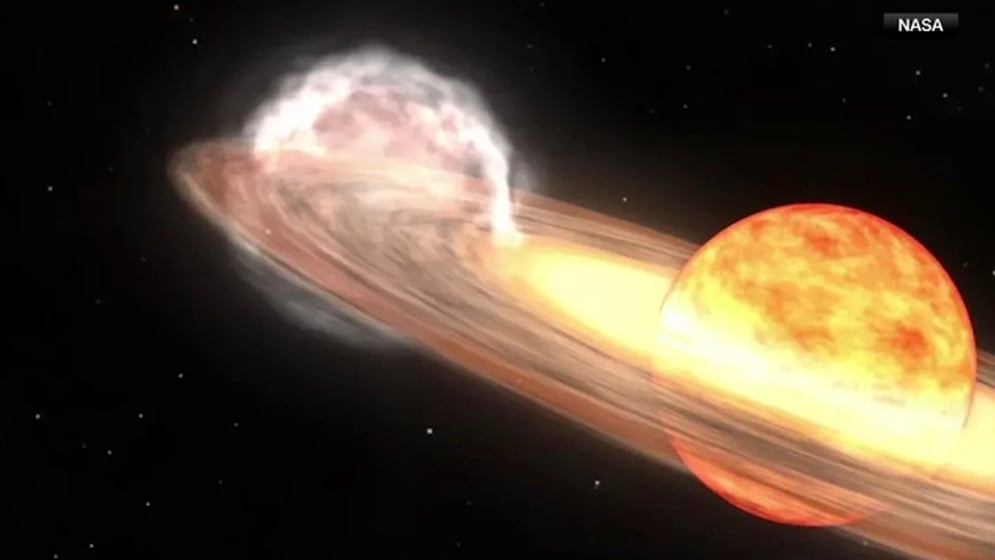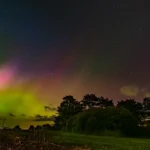Every 80 years, the cosmos unveils a spectacular phenomenon: a nova explosion, a celestial display outshining all other cosmic wonders. This extraordinary event occurs when a white dwarf star undergoes a thermonuclear explosion, increasing its brightness by a factor of ten thousand. Visible to the naked eye from millions of miles away, this stellar spectacle is about to grace our skies once again.

The Mechanics of a Nova
In a binary star system like T Coronae Borealis, a white dwarf and a red giant coexist. The white dwarf, roughly the size of Earth but with the mass of our Sun, draws in material shed by its companion red giant. As the accumulated material reaches critical mass, intense heat triggers a runaway thermonuclear reaction—a nova explosion. Despite the dazzling brightness it emits, the white dwarf remains intact after the event, returning to its original luminosity once the outburst subsides.
The last recorded nova from this system occurred in 1946, part of a cycle observed for over 800 years.
Locating Corona Borealis
Situated approximately 3,000 light years away within the Corona Borealis constellation, T Coronae Borealis can be challenging to spot amidst urban light pollution. To find it, locate the bright stars Vega and Arcturus in the Northern Hemisphere and draw an imaginary line between them. Corona Borealis lies nearly midway along this line, forming a distinctive C-shape in the summer sky.
When Will the Nova Occur?
Anticipation surrounds the impending nova event, expected anytime between now and September, although the exact timing remains unpredictable. NASA and astronomers worldwide are poised to observe and gather data on this celestial phenomenon.
Community Involvement in Observation
Utilizing social media and citizen scientists, NASA aims to promptly alert global observers to the nova’s onset. This collaboration enhances our understanding of nova mechanics and contributes to ongoing astronomical research.
Viewing the Nova
Contrary to a supernova’s cataclysmic explosion, the nova of T Coronae Borealis will appear as a new, bright star in the night sky, visible without telescopic aid during clear conditions. Enthusiasts with telescopes or binoculars can expect an enhanced viewing experience.
Understanding Novas vs. Supernovas
Unlike supernovas, which mark the violent end of a star’s life, novas involve a symbiotic relationship between a white dwarf and a red giant. Novas are recurring events that do not result in the destruction of the white dwarf, distinguishing them from the more destructive supernovas responsible for elements heavier than iron in the universe.
Witnessing a nova like T Coronae Borealis offers a rare opportunity to engage with the cosmos, inspiring a new generation of astronomers and deepening our understanding of stellar evolution. As we await this celestial spectacle, the sky beckons us to marvel at the wonders of the universe.








